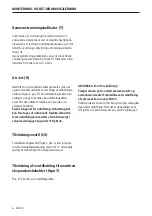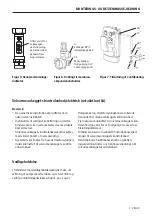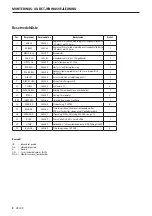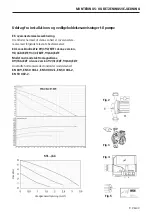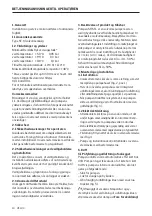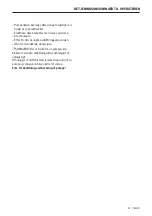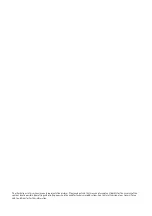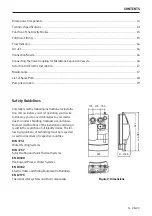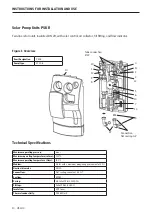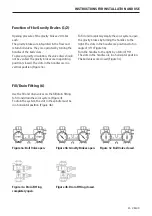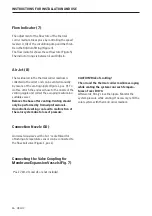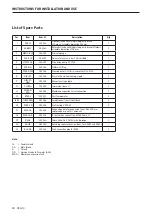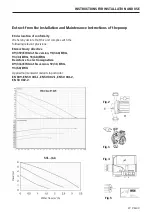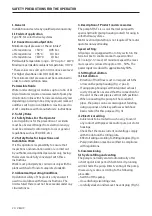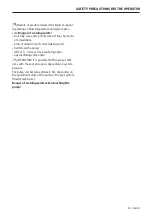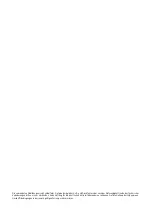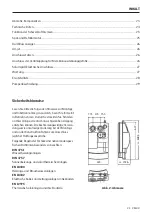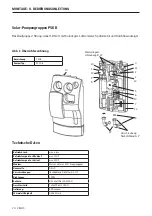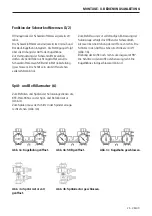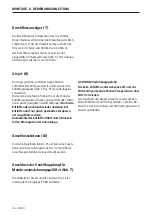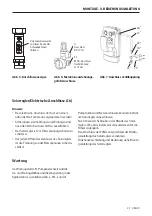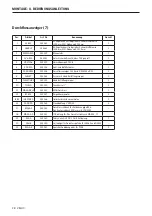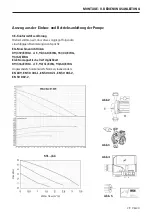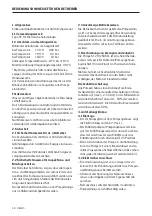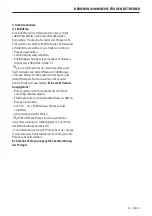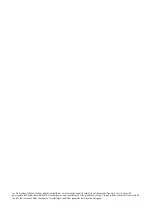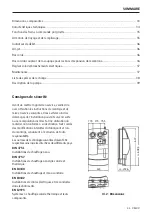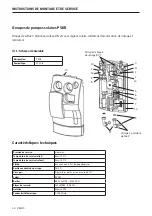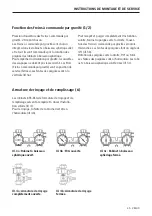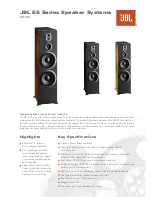
20 VELUX
SAFEty PRECAUtIoNS FoR thE oPERAtoR
1. General
Installation and service by qualified personnel only.
1.1 Fields of application
Type ST: for solar thermal systems.
1.2 Connection and output data
Minimum input pressure at the air intake*
at temperatures +50°C:
0,05 bar
at temperatures +95°C:
0,3 bar
at temperatures +110°C:
1,0 bar
Permissible temperature range: - 10°C up to + 110°C
Maximum permissible ambient temperature: +40°C
*These values are valid up to 300 m above sea level.
For higher elevations add: 0,01 bar/100 m.
The minimum inlet pressure must be maintained in
order to avoid cavitation noise.
Permissible fluids:
Water and water/glycol mixtures up to a ratio of 1:1.
Glycol mixtures require a reassessment of pump hy-
draulic data in line with the increased viscosity and
depending on mixing ratios. Only approved marks of
additives with corrosion inhibitors must be used in
strict compliance with manufacturers’ instructions.
2. Safety Rules
2.1 Safety Rules For the operator
Local regulations for the prevention of accidents
must be observed. Danger from electrical energy
must be excluded (conforming to local or general
regulations such as IEC, VDE, etc.)
2.2 Safety Rules for Inspections and
Installation Work
It is the operator’s responsibility to ensure that
inspections and installation work are carried out
by authorized and qualified personnel only, having
themselves made fully conversant with these
instructions.
Work must principally be carried out only with the
plant switched off and at complete standstill.
2.3 Abnormal operating Conditions
Operational safety of the plant is only ensured if
used in accordance with these instructions. The
limits stated there must not be exceeded under any
circumstances.
3. Description of Product and Accessories
The pump ST/STL is a solar thermal pump with
special hydraulic (pump housing coated) for using in
solar thermal systems.
Motor overload protection is not required. The motor
operates non-overloading.
Speed setting:
All pumps are equipped with a rotary switch in the
terminal box to enable manual 3-speed control
(1 = min) (2-3 = max). At minimum speed the maxi-
mum speed is reduced to approx. 40 … 50%. The
power input is reduced to approximately 50%.
4. Sitting/Installation
4.1 Installation
– Direction of fluid flow must correspond with the
arrow on the pump housing (Fig. 2, pos. 1).
– If using pump housings with integrated exhaust
cavity it must be observed that the connection for
the vent or the vent pipe is vertical (12h position).
– When connecting the pump to the conduit of
pipes, the pump can be secured against twisting
using a spanner on the key surfaces which have
been created for this purpose (Fig. 3).
4.2 Electrical wiring
– Cable leads to be routed in such a way to avoid
any contact with pipe work and/or pump or stator
housings.
– Check that the mains current and voltage comply
with the data on the rating plate.
– Effect all wiring according to Wiring diagram (Fig. 4).
– Pump/installation must be earthed in compliance
with regulations.
5. Commissioning
5.1 System filling and venting
The pump is normally vented automatically after
a short operational period. Short-term dry-running
will not harm the pump. Direct venting of the pump,
if necessary, is done according to the following
procedure:
– Switch off the pump,
– close discharge isolating valve,
– carefully slacken and remove the vent plug (Fig. 5).

